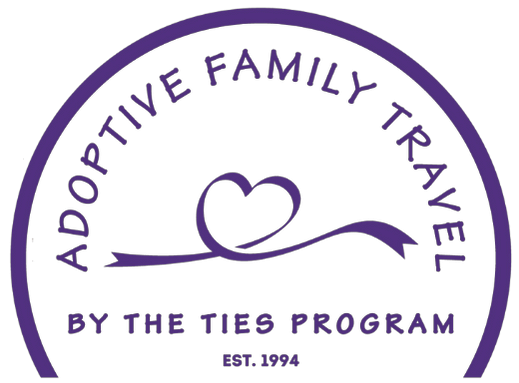 Identity is a complicated topic. When traveling in their birth country, many kids are anxious to walk a few steps ahead or a few steps behind whoever they are traveling with to see what it feels like to blend in, to be “like everyone else.” For most, it is the first time in their lives where they have had the chance, and the call is somewhat frightening, but irresistible.
Identity is a complicated topic. When traveling in their birth country, many kids are anxious to walk a few steps ahead or a few steps behind whoever they are traveling with to see what it feels like to blend in, to be “like everyone else.” For most, it is the first time in their lives where they have had the chance, and the call is somewhat frightening, but irresistible.
Kids tend to consciously factor in the language issue, sharing (usually afterward),“I thought that if I just didn’t talk to anyone, no one would know.” And for short periods of time, that works.
Despite being in a country where blending feels like an option (and to an extent, it is), the kids quickly pick up on the more subtle differences. Their inner self is saying, “Wait a minute, I STILL stand out?” Somehow they know they are not seen as 100 percent Chinese or 100 percent Guatemalan or 100 percent Kazak. Issues of dual identity become front and center.
Country after country, kids spend a lot of time saying things like “Am I Indian or am I American?” Or “Am I Russian or am I American?” Even in countries where race is not an issue, the dual identity conversation goes on, and it sounds like this, “Do you think it is because I can’t speak the language or is it more than that? Do I stand differently? Are my facial expressions different?” Taking a few steps, we’ll hear “Do I walk differently?”
And in unison we all ponder the complexities of fitting in but still feeling different.
It’s a struggle, but in the end, the struggle tends to bring people to a better understanding of themselves.
Lynelle Beveridge, founder of Inter-Country Adoptee Support Network and an adoptee who was raised in Australia, relates, “I think in many ways my journey as an adoptee has been all about incorporating these two worlds, and coming to accept and choose who I want to be and how I want to live.” Even at age 11, Andrew Abraham echoes the same sentiment, “I can be happy being adopted and I can have two families, two cultures and two homes.”
Some adoptees see dual identity in a different light. In talking with 23 year old Andrea Christensen, who traveled to her birth country when she was 18, she said, “Being adopted and having two cultures is really only a part of my identity. Being Asian has been more of an issue for me. People don’t look at me and immediately think I am adopted, but they do immediately know I’m Asian.” Racial identity is a huge topic, and one kids discuss a lot as they travel.
A homeland journey cannot take away the pain of teasing or prejudice kids have been the brunt of in their past. That will remain a part of who they were in their “yesterdays.” However, as kids get more comfortable with who they are, which a homeland journey can help with, it shifts who they become in their “tomorrows.”
I often think how wonderfully supportive it is that during this time, parents, siblings, spouses, grandparents and close friends, are often in the wings as a safety net, not really being able to fully understand the emotion that goes with it, but honoring those they love by giving them the opportunity to explore that part of themselves.
To learn about birth country travel to your (or your child’s) country of birth, find your country to get started.

